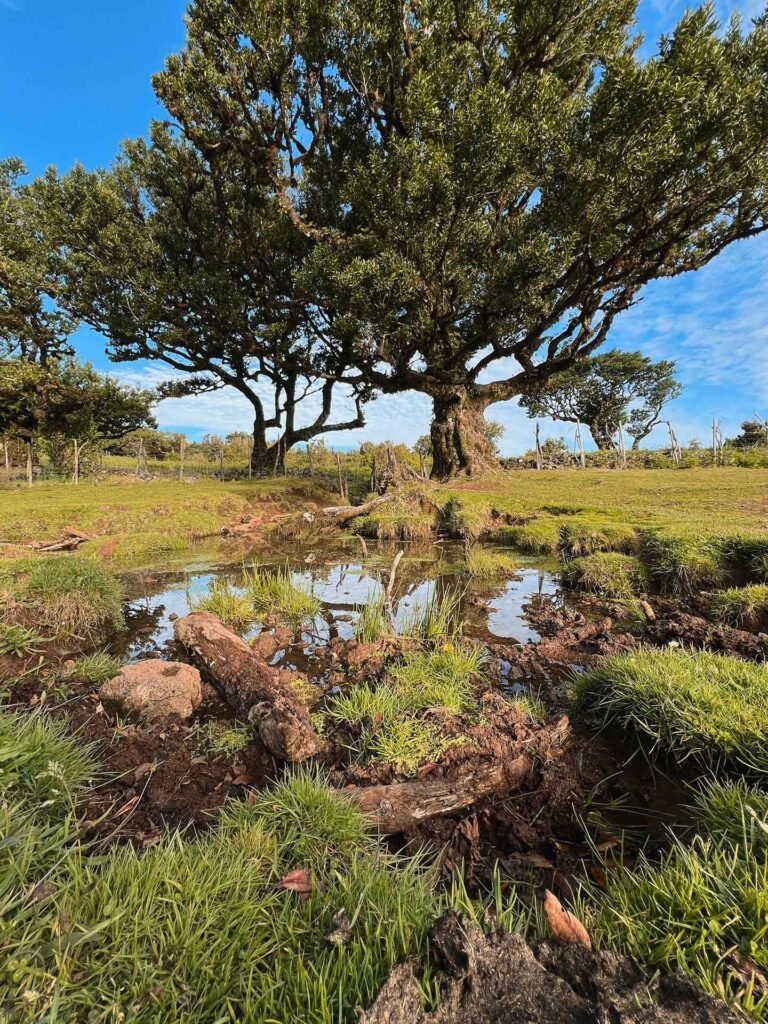Virgílio Silva is known as a person with a broken thermostat. Hot or cold, he is wearing a t-shirt and is not trying to hide from rain or wind, even at Pico do Arieiro in the reforestation area. Virgílio is one of the key people at Associação dos Amigos do Parque Ecológico do Funchal, an independent group of environmentalists and volunteers that plant trees to counteract wildfires and take care of Madeira biodiversity.
The group started planting trees at Cabeço da Lenha, an area near one of the highest peaks of Madeira, after the fires of 2010 that destroyed vast areas of vegetation in the mountains and later resulted in mudslides and casualties as far as in the capital of Funchal. Over all these years, the team of volunteers have been doing a noble job of cleaning the area from burnt wood, planting bushes and trees, and now taking care of the new forest.
They are doing a great service not only to us, city people, by decreasing our risk of being washed away in the ocean with the next rockslide – but to humanity in general. Madeira Laurel Forest – or Laurissilva da Madeira in Portuguese – is part of the Natural World Heritage, also recognized by UNESCO.
It is the forest that existed more than a million years ago and survived the ice ages when everything else was frozen and dried. Madeira Laurisilva is a miracle – not only because it is amazing for stargazing and also attracted the filming crew of Star Wars. It is one of the most ancient and living things that you can witness in your life, and Virgílio Silva is sharing what we all can do to preserve it. Watch the video interview or read its parts below.
Restoring biodiversity was our ultimate goal, but first, we had to bring life back.
We made the right call to rely only on endemic species because we knew if something can survive it’s only native plants.
For us, this was a mixed project: not only restoring life and biodiversity but also providing security for the people living by the sea. Madeira is a large rock, and rocks tend to rack into smaller boulders. During heavy rain, they roll down the hill, bringing destruction to cities below.

From day one, we decided we would not just plant, but also care for the plants afterwards. Whatever amount of plants we put in the ground, they needed to succeed. Over the years, we had winters where we planted 8,000 to 9,000 plants each season. Biodiversity is not just about having more plant species. For example, certain birds feed only on specific plants, and if they don’t find those plants, they move away. The greater the diversity of plants we have on the ground, the greater the number of animal species we find nearby.
After the last big fire in 2010, everything was silent—no birds chirping, no bees buzzing. The landscape was black and silent, a sad sight. One day, however, the first spring after the fire, we were turning burnt wood into woodchips and suddenly heard birds chirping. We found a small nest of blackbirds in a pile of woodchips, and life was coming back even in the worst of situations.
Madeira’s forests are special because this is the kind of forest that most Europeans had at their doorstep a few thousand years ago.

I moved to the island to prevent it from turning into what I saw on the continent. Instead of moving from place to place to escape environmental destruction, I decided to be proactive and work towards keeping things in their natural state. That’s why I joined the association and worked towards pressuring politicians to take the correct measures and follow the right policies. Not that it always works, but if we don’t try, it will be even worse.
Apart from talking, we also take action—coming on weekends to work on projects that turn the land into something nice, not just concrete and tarmac. Biodiversity is important not only for the environment but also for our happiness.

Madeiran trees are not more resistant to fire, but the environment where they grow is more humid and damp, making it less likely for fires to spread. Water is crucial for Madeira’s ecosystem.
Looking at the globe, you’ll find many deserts at the same latitude as Madeira, like Morocco, Egypt, the Middle East, Mongolia, and the Gobi Desert. Madeira is an exception because of its geography and vegetation, which collects humidity and deposits water underground. Water is going to be the gold of the future, essential for life. Despite having plenty of good water, Madeira still imports water in plastic bottles, which makes no sense.

This experience taught me to learn as much as possible and to try new solutions. Plants from the same species we planted are now appearing outside our plantation areas, and plants we never planted are showing up in our areas. This indicates that as we restore normality to the land, nature adjusts itself and begins to thrive. We see birds and plants that hadn’t been seen for years.
The causes of environmental problems are less important than working together to find solutions. We must learn and act to ensure a sustainable future. I’m optimistic that we can do this, not just by talking, but by taking concrete actions.
To know more about biodiversity – not only the one of Madeira but more globally, visit our project page Biodiversity Illustrated.




